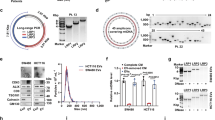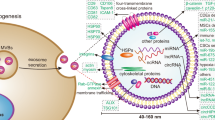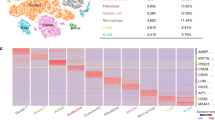Abstract
Exosomes are emerging mediators of cell-cell communication, which are secreted from cells and may be delivered into recipient cells in cell biological processes. Here, we examined microRNA (miRNA) expression in esophageal squamous cell carcinoma (ESCC) cells. We performed miRNA sequencing in exosomes and cells of KYSE150 and KYSE450 cell lines. Among these differentially expressed miRNAs, 20 of the miRNAs were detected in cells and exosomes. A heat map indicated that the level of miR-451a was higher in exosomes than in ESCC cells. Furthermore, miRNA pull-down assays and combined exosomes proteomic data showed that miR-451a interacts with YWHAE. Over-expression of YWHAE leads to miR-451a accumulation in the exosomes instead of the donor cells. We found that miR-451a was sorted into exosomes. However, the biological function of miR-451a remains unclear in ESCC. Here, Dual-luciferase reporter assay was conducted and it was proved that CAB39 is a target gene of miR-451a. Moreover, CAB39 is related to TGF-β1 from RNA-sequencing data of 155 paired of ESCC tissues and the matched tissues. Western Blot and qPCR revealed that CAB39 and TGF-β1 were positively correlated in ESCC. Over-expression of CAB39 were cocultured with PBMCs from the blood from healthy donors. Flow cytometry assays showed that apoptotic cells were significantly reduced after CAB39 over-expression and significantly increased after treated with TGF-β1 inhibitors. Thus, our data indicate that CAB39 weakens antitumor immunity through TGF-β1 in ESCC. In summary, YWHAE selectively sorted miR-451a into exosomes and it can weaken antitumor immunity promotes tumor progression through CAB39.
This is a preview of subscription content, access via your institution
Access options
Subscribe to this journal
Receive 12 print issues and online access
$259.00 per year
only $21.58 per issue
Buy this article
- Purchase on Springer Link
- Instant access to full article PDF
Prices may be subject to local taxes which are calculated during checkout







Similar content being viewed by others
Data availability
All raw data that support the findings of this study are available from the corresponding author on reasonable request.
References
Hsu PK, Chen HS, Wang BY, Wu SC, Liu CY, Shih CH, et al. Hospital type- and volume-outcome relationships in esophageal cancer patients receiving non-surgical treatments. World J Gastroenterol. 2015;21:1234–42.
Chen W, Zheng R, Baade PD, Zhang S, Zeng H, Bray F, et al. Cancer statistics in china, 2015. CA: a cancer J Clin. 2016;66:115–32.
Pennathur A, Gibson MK, Jobe BA, Luketich JD. Oesophageal carcinoma. Lancet (Lond, Engl). 2013;381:400–12.
Tlsty TD, Coussens LM. Tumor stroma and regulation of cancer development. Annu Rev Pathol. 2006;1:119–50.
Paskeh MDA, Entezari M, Mirzaei S, Zabolian A, Saleki H, Naghdi MJ, et al. Emerging role of exosomes in cancer progression and tumor microenvironment remodeling. J Hematol Oncol. 2022;15:83.
Chen BY, Sung CW, Chen C, Cheng CM, Lin DP, Huang CT, et al. Advances in exosomes technology. Clin Chim acta; Int J Clin Chem. 2019;493:14–9.
Sreekumar R, Sayan BS, Mirnezami AH, Sayan AE. Microrna control of invasion and metastasis pathways. Front Genet. 2011;2:58.
Ahmed FE. Role of mirna in carcinogenesis and biomarker selection: A methodological view. Expert Rev Mol Diagnos. 2007;7:569–603.
Yamashita T, Takahashi Y, Takakura Y. Possibility of exosome-based therapeutics and challenges in production of exosomes eligible for therapeutic application. Biol Pharm Bull. 2018;41:835–42.
Saliminejad K, Khorram Khorshid HR, Soleymani Fard S, Ghaffari SH. An overview of micrornas: Biology, functions, therapeutics, and analysis methods. J Cell Physiol. 2019;234:5451–65.
Yamada Y, Arai T, Sugawara S, Okato A, Kato M, Kojima S, et al. Impact of novel oncogenic pathways regulated by antitumor mir-451a in renal cell carcinoma. Cancer Sci. 2018;109:1239–53.
Shen YY, Cui JY, Yuan J, Wang X. Mir-451a suppressed cell migration and invasion in non-small cell lung cancer through targeting atf2. Eur Rev Med Pharmacol Sci. 2018;22:5554–61.
Riquelme I, Tapia O, Leal P, Sandoval A, Varga MG, Letelier P, et al. Mir-101-2, mir-125b-2 and mir-451a act as potential tumor suppressors in gastric cancer through regulation of the pi3k/akt/mtor pathway. Cell Oncol (Dordr). 2016;39:23–33.
Teng Y, Ren Y, Hu X, Mu J, Samykutty A, Zhuang X, et al. Mvp-mediated exosomal sorting of mir-193a promotes colon cancer progression. Nat Commun. 2017;8:14448.
Zhang L, Yu D. Exosomes in cancer development, metastasis, and immunity. Biochim et Biophys acta Rev cancer. 2019;1871:455–68.
Hornick NI, Huan J, Doron B, Goloviznina NA, Lapidus J, Chang BH, et al. Serum exosome microrna as a minimally-invasive early biomarker of aml. Sci Rep. 2015;5:11295.
Chen J, Yao D, Chen W, Li Z, Guo Y, Zhu F, et al. Serum exosomal mir-451a acts as a candidate marker for pancreatic cancer. Int J Biol markers. 2022;37:74–80.
Jiang Y, Chen F, Ren X, Yang Y, Luo J, Yuan J, et al. Rna-binding protein col14a1, tns1, nusap1 and ywhae are valid biomarkers to predict peritoneal metastasis in gastric cancer. Front Oncol. 2022;12:830688.
Yang YF, Lee YC, Wang YY, Wang CH, Hou MF, Yuan SF. Ywhae promotes proliferation, metastasis, and chemoresistance in breast cancer cells. Kaohsiung J Med Sci. 2019;35:408–16.
Peng L, Yan H, Qi S, Deng L. Cab39 promotes the proliferation of nasopharyngeal carcinoma cne-1 cells via up-regulating p-jnk. Cancer Manag Res. 2020;12:11203–9.
Rosenberger CM, Podyminogin RL, Navarro G, Zhao GW, Askovich PS, Weiss MJ, et al. Mir-451 regulates dendritic cell cytokine responses to influenza infection. J Immunol (Baltim, Md : 1950). 2012;189:5965–75.
Li R, Li D, Wang H, Chen K, Wang S, Xu J, et al. Exosomes from adipose-derived stem cells regulate m1/m2 macrophage phenotypic polarization to promote bone healing via mir-451a/mif. Stem cell Res Ther. 2022;13:149.
Liu Z, Zhao Y, Kong P, Liu Y, Huang J, Xu E, et al. Integrated multi-omics profiling yields a clinically relevant molecular classification for esophageal squamous cell carcinoma. Cancer cell. 2023;41:181–95.e189.
Flavell RA, Sanjabi S, Wrzesinski SH, Licona-Limón P. The polarization of immune cells in the tumour environment by tgfbeta. Nat Rev Immunol. 2010;10:554–67.
Picone P, Sabatino MA, Ditta LA, Amato A, San Biagio PL, Mulè F, et al. Nose-to-brain delivery of insulin enhanced by a nanogel carrier. J Control Release. 2018;270:23–36.
Batlle E, Massagué J. Transforming growth factor-β signaling in immunity and cancer. Immunity. 2019;50:924–40.
Tauriello DVF, Sancho E, Batlle E. Overcoming tgfβ-mediated immune evasion in cancer. Nat Rev Cancer. 2022;22:25–44.
Bhome R, Del Vecchio F, Lee GH, Bullock MD, Primrose JN, Sayan AE, et al. Exosomal micrornas (exomirs): Small molecules with a big role in cancer. Cancer Lett. 2018;420:228–35.
Yang Y, Sang ZY, Ma J, Zhu YP, Wu SF. Kras. ywhae, sp1 and msra as biomarkers in endometrial cancer. Transl cancer Res. 2021;10:1295–312.
Zhao J, Ma X, Xu H. Mir-29b-3p inhibits 22rv1 prostate cancer cell proliferation through the ywhae/bcl-2 regulatory axis. Oncol Lett. 2022;24:289.
Acknowledgements
We would like to thank the Shanxi Medical University Key Laboratory of the Ministry of Education for providing us with the Cell physiology equipment platform.
Funding
This work was supported by the Fundamental Research Program of Shanxi Province (20210302123292); the Central Guidance on Local Science and Technology Development Fund of Shanxi Province (YDZJSX2021A018); and the innovative project of graduate education in Shanxi province (2022Y366).
Author information
Authors and Affiliations
Contributions
Xiaolong Cheng and Ting Yan: formal analysis, funding acquisition, project administration; Lu Wang: data curation, validation, writing-original draft. Huijuan Liu, Qinglu Wu, and Yiqian Liu: supervision, visualization, revised and edited the manuscript. Zhenpeng Yan, Guohui Chen, and Yao Shang: formal analysis, investigation. Songrui Xu and Qichao Zhou: supervision, conceptualization.
Corresponding authors
Ethics declarations
Competing interests
The authors declare no competing interests.
Additional information
Publisher’s note Springer Nature remains neutral with regard to jurisdictional claims in published maps and institutional affiliations.
Supplementary information
Rights and permissions
Springer Nature or its licensor (e.g. a society or other partner) holds exclusive rights to this article under a publishing agreement with the author(s) or other rightsholder(s); author self-archiving of the accepted manuscript version of this article is solely governed by the terms of such publishing agreement and applicable law.
About this article
Cite this article
Wang, L., Liu, H., Wu, Q. et al. miR-451a was selectively sorted into exosomes and promoted the progression of esophageal squamous cell carcinoma through CAB39. Cancer Gene Ther (2024). https://doi.org/10.1038/s41417-024-00774-8
Received:
Revised:
Accepted:
Published:
DOI: https://doi.org/10.1038/s41417-024-00774-8



